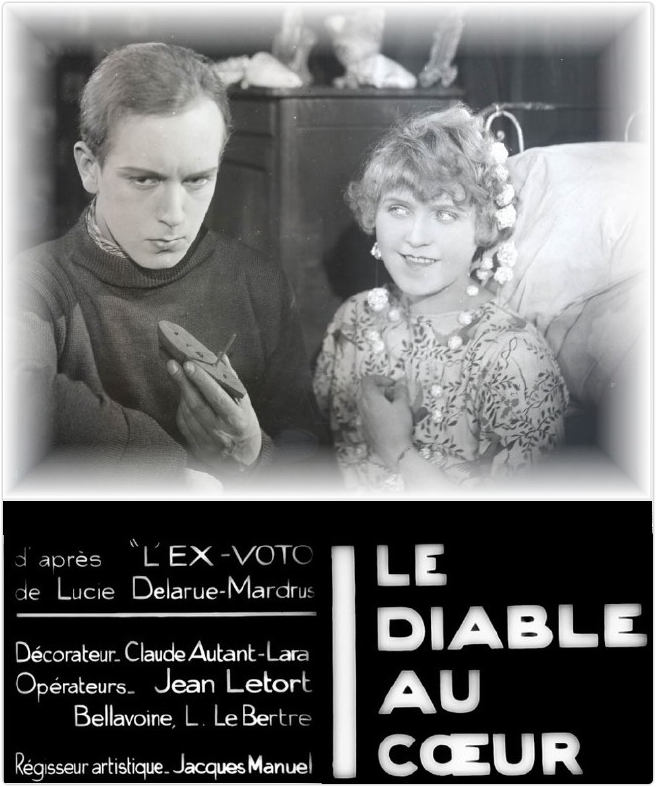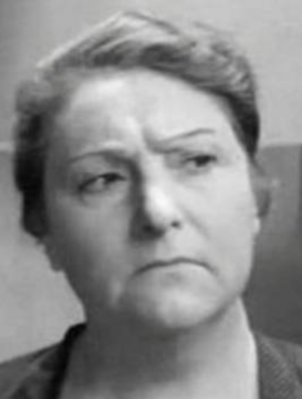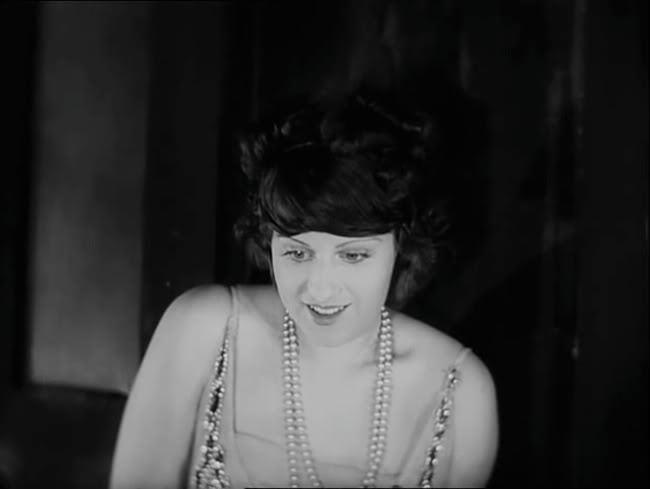Synopsis
Ludivine lives at home with her idle parents and spends her time leading her brothers and other little urchins and rascals in acts of shall we say antisocial activity. Chief target of her hostility is the grown younger son of the Leherg family, Delphin, whose work ethic represents everything the genetically idle girl despises. After one trick paid on the family, she’s caught by Delphin and, feeling rather humiliated, lets out a petulant curse wishing that he and his father were both dead.
Credits
Director (1)
Actors (9)
Production and distribution (1)
- Executive Producer : Cinégraphic
Full credits (7)
- Adaptation : Marcel L'Herbier
- Screenwriter : Marcel L'Herbier
- Directors of Photography : Jean Letort, Louis Le Bertre, Lucien Bellavoine
- Assistant Director : Claude Autant-Lara
- Author of original work : Lucie Delarue-Mardrus
- Production Designers : Claude Autant-Lara, Lucien Aguettand, Robert-Jules Garnier
- Artistic Director : Jacques Manuel
Technical details
- Type : Feature film
- Genres : Fiction
- Sub-genre : Drama
- Production language : Silent
- Production country : France
- Original French-language productions : Unspecified
- Nationality : 100% French (France)
- Production year : 1928
- French release : 03/03/1928
- Runtime : 2 h 5 min
- Current status : Released
- Approval :
- Color type : Black & White
- Aspect ratio : 1.33
- Audio format : Silent
News & awards
About
If ever a director of the French silent cinema demanded a reappraisal, c’est Marcel l’Herbier. There was a time, back when Georges Sadoul wrote his legendary Dictionary of Film, when he was most fêted for The Late Mathias Pascal, L’Inhumaine and El-Dorado, which Sadoul wrote of with differing levels of respect. No sign of his magnum opus, L’Argent, and no mention either of Le Diable au Coeur. The former may now be well known, and the other l’Herbiers listed above have been restored lovingly to dizzy repute, but Le Diable remains an absolute anomaly, nay, an anonymity, in his filmography.
It’s set in a small French fishing port and centres around one Ludivine Bucaille. She lives at home with her bone idle parents and ne’er-do-well little brothers and spends her own time leading her brothers and other little urchins and rascals in acts of shall we say antisocial activity. Chief target of her hostility is the grown younger son of the Leherg family, Delphin, whose work ethic represents everything the genetically idle girl despises. After one trick paid on the family, she’s caught by Delphin and, feeling rather humiliated, lets out a petulant curse wishing that he and his father were both dead. To paraphrase Ian Keith, Cedric Hardwicke and Yul Brynner in a certain Cecil B.de Mille picture, “so let it be cursed, so let it be done.” Et voila, a shipwreck made to order and, though Delphin survives, his father doesn’t, the shock kills his poor wife and Delphin loses not just his parents but his boat, house and all belongings. A chastened Ludivine feels remorse and sets out to mend her ways.
Yes, it’s cheesy stuff, a sort of Gallic variant on those God-awful Mary Pickford cute-fests of the early twenties. Or it would be, were it not for the fact that there’s a touch of European spice (it was a co-production with Gaumont-British) to proceedings that Pickfords films never had. Even the heroine’s name conjures up the current French minx Sagnier (and indeed one can easily imagine the contemporary Ludivine relishing playing her namesake about ten years ago). For her part, Balfour is delightful, all the more so because she is virtually unknown today. In her day she was the brightest star of British twenties film – immortalised as Squibs, star of Reveille and the impossible to see but much sought after musical Raise the Roof – but today she’s remembered more as Jessie Matthews’ friend in Evergreen or as the heroine of Hitchcock’s worst silent, Champagne. There’s able support from all and sundry, from Karl and Fonteney as the Thénardier-like parents to Ludivine’s proto-Éponine and, best of all, from a deliciously lecherous Nox as a local Don Juan who Ludivine is sold to by her grasping parents to pay off debts.
What really makes the film linger in the mind, however, is the look of the thing (special mention to Claude Autant-Lara’s realistically drab interiors); it’s one of the most gorgeous French films of the 1920s, its seafronts looking ahead to Pagnol’s Marius Trilogy, as well as to Hitch’s The Manxman the following year and Grémillon’s Remorques, and with a clarity that looked ahead to the poetic realist and even neo-realist movements of the following decades. There are numerous scenes to treasure, most notably the final confrontation at sea, as well as a wonderful stand-off sequence where Ludivine first hears the news of the Leherg shipwreck, dancing across a bridge to be met by a mass of sailors looking like extras from an Eisenstein film. Like the film says, “after the dream – reality.”
Source : wondersinthedark.wordpress.com










































